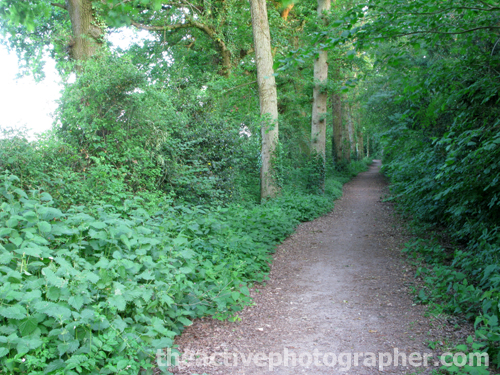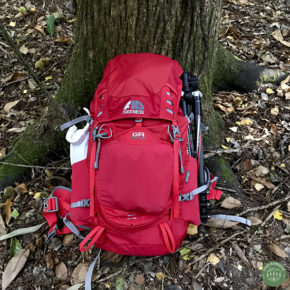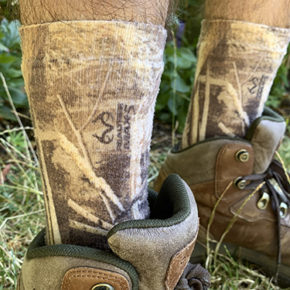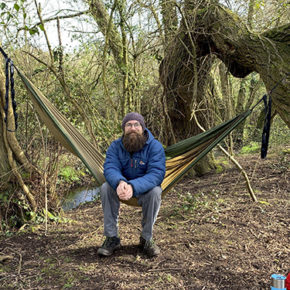This week: I’m strolling along a local ancient footpath, taking a little time out from everything.
Having had a hectic few weeks, one way or another, I recently decided to turn off all office-based technology and head outdoors for a bit of space. Taking this step is always important when times get manic, and it allows me to get perspective on my activities.
On this occasion, it also got me thinking about the joys of shooting pictures on traditional film cameras and why, as photographers, we shouldn’t be so quick to rely on gizmos and gadgets when making our images.
Some quick links to things mentioned today:
- Mamiya 7 II rangefinder
- Jobo CPE-2 Plus film procesor
- Blog Post: Photographic Jewellery
- The Kelvin Scale
Music featured in this episode is courtesy of Matt Stevens. You can check out more of his work here.
Podcast: Play in new window | Download
Subscribe: Apple Podcasts | RSS








Hi Giles, I`d like to add something to the thoughts you recorded both here & in your last Blog Post. I `ll play the Devil`s Advocate if I may! Sometimes I will quote facts (as I see them) and sometimes I will state an opinion. Here goes!
1. There is not a Photographer in history that has NOT post processed! When any photographer states that they do not Post Process they are either ignorant or deluding themselves!
Right that should have woken people up a bit! Deep breath and off again!
2. So that was a big statement, but it`s a fact. All film was developed either by the photographer or a Lab. Like it or not, that roll of film IS Post Processed & to a greater or lesser effect one could change exposure, colour, contrast etc. That is Post Processing. You will know the chap`s name, but during the late 20th Century, a French photographer created a greta deal of controversy in paris by “manipulating” or Post Processing some negs. By manually colouring them! This was extremely controversial inducing such comments as ” is this photography ” etc. We hear the same comments today, but in reference to Photoshop normally. I make this first statement because I often hear rather condescending comments from “real” photographers who proudly state “I do not Post Process or manipulate my pictures”. I`d say nonsense! But, I do agree that many amateurs over Post Process and manipulate their images.
If you shoot Jpeg the Camera Post Processes for you depending on what you may have set in camera (ie Nikon Picture Control). If you shoot RAW the RAW converter you use will Post Process for you on import. Try this. Set some extreme Picture Control Settings in your Nikon (if you have one) and leaving the shots on RAW only, shoot a few shots. Then download into your RAW processor of choice. All the Picture Control adjustments are removed whilst the software appends its own algorithms within the RAW converter. If you shoot ONLY on Jpeg then what you have set in Picture Control is what you get. But as I am sure you know, this can to some extent be adjusted in any RAW converter. So you see, you DO Post Process, like it or not! In the case of film you or the Lab does so, in the case of the Jpeg your camera and you can and finally in RAW the RAW converter does initially followed by you making some adjustments as well.
Wow, controversial or what? Hope I am not banned yet?
3. If, as most professionals do, you shoot RAW (many Pro`s shoot Jpeg when Sports Shooting for speed and quick distribution to mgazines etc.), it is a fact that your camera only records the scene in 1`s & 0`s. When downloaded into a RAW Converter, ACR (including Lightroom)/Aperture/Capture NX etc. That software then
converts that RAW data and produces an image in the sense we understand. Every single file receives the same treatment (for a given software). Regardless of In Camera settings (ie Nikon Picture Control) as soon as you download the images into the RAW converter that software ignores Picture Control Settings & converts the file according to its own RAW processor profiles. You do however see the Picture Controls that you may have set on the camera LCD as this is a Jpeg that is embedded in the RAW data. Often the converted RAW file will look “flatter” than the same Jpeg from the same shot that has been produced in camera. That is because the camera has Post Processed the file in the camera and in the RAW file is left to you to tweak.
So, there we are, we all Post Process our images! The controversy though is perhaps based on how much do we Post Process? As I have said earlier, I believe that a large number of amateurs over process, sometimes in the misguided belief that they will produce a silk purse fro a sow`s ear, so to speak! Taken to extremes, some of the quite brilliant Photoshop work that we can witness by some Photoshop professionals, is truly brilliant, but is it photography now or is it Digital Art? I will leave that to others to possibly debate as I`d rather just capture pictures rather than argue what is photography or not!
4. I think it`s 4 anyway? Filters. Have to say I use only one filter now within my workflow. A Polariser. I simply no longer need any other type to achieve my aims.
5. My own workflow is quite simple. I shoot motorcycle sports every week. From a local Speedway meeting I will have over 1000, yes, one thousand RAW images. The wedding photographers will not be shocked at the numbers I am sure! I import these RAW files into Aperture. I only use Macs and Apertur is a Mac App. Once they are in I whiz through and immediately delete any obviously unusable images. Then I keyword accurately right down to the rider in the shot. Then a second run through where I mark those images that I think I will take forward to phase 2. Then I look at each remaining image. If I like it I will then make any minor adjustments that may include White Balance, Curves etc. And apply Input Sharpening. That process for each image takes less than 2 minutes. At that stage I annotate the image to show it is ready for Export to different mediums. This may be the Web, E-Mail to clients or for printing. Each process is different and depends ultimately on where the image is going. Occasionally I will export the RAW file to a PlugIn such as NIk Silver Efex Pro 2 to conduct Black & White conversion. This is also very quick. You will notice I have been no where near Photoshop! But I do sometimes. So when?
Well to use LAB (very wide colour space) mode, for Panoramic conversions, and maybe If I have some very tricky cloning to conduct, but that is very rare indeed! Very occasionally I may combine 2 images of different exposures, typically in landscapes when the sky is so much brighter than the fore/mid ground. But, to be honest, there is so much data in modern RAW files that I can often use Aperture to carry out the same process but obviously in a different, but much quicker way. I estimate that 98% of all post processing is conducted in Aperture. By the way, I used Lightroom since the very early Beta versions and up to LR 2.0. I concurrently used Aperture and when Aperture upgraded to 3.0 I never used Lightroom again.
Well I am confident that this may rattle some cages but hey ho!
Finally I absolutely concur with Giles that we should use all of our skill to capture the best RAW data we can in camera. Oh, I may not have mentioned but ACR/Aperture/NX etc. all produce slightly different results within their RAW converters. If you have access to different software just compare results, you can see a differences as in the same way we did with different film.
That`ll do, rambled on too long!
The main thing is, be passionate about your photography, do what YOU want to do and above all enjoy it & don`t take your selves to seriously!
Nick
Both a great article and subsequent comment from Nick. Provocative and fascinating viewpoints